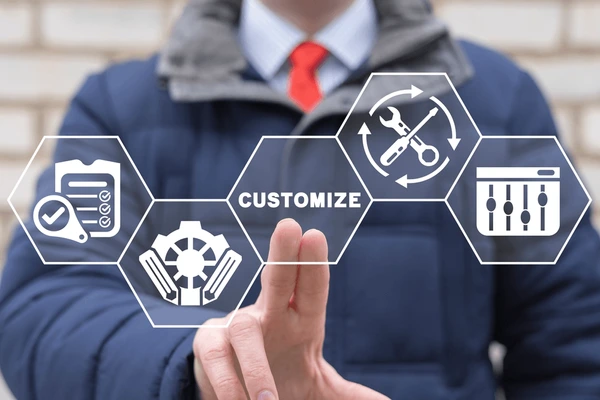People want personalized goods that meet their exact needs and preferences more and more in today’s busy world. In the past, customers had to settle for a one-size-fits-all solution. These days, they want to be able to create products that fit their unique needs and styles. Because of this change in how people act, new tools have been made possible. Product configurators are the most important ones because they allow people to make their own products.
A product configurator is a powerful online tool that allows customers to personalize products before purchasing them. When customers use a product configurator, they can pick from different colors, fabrics, sizes, and features to make a product that is exactly what they want. Whether it’s designing a unique piece of furniture, customizing a car, or personalizing a tech gadget, product configurators offer an interactive and user-friendly way for consumers to bring their visions to life.
The Rise of Personalization
The demand for personalization has skyrocketed in recent years, driven by the growing expectation that brands will cater to individual tastes. Customers no longer want to settle for off-the-shelf products; they crave the opportunity to make items their own. From tailored clothing to custom home decor, personalization is now a key selling point for many businesses.
Product configurators are at the heart of this revolution. These tools enable brands to give their customers exactly what they want without the need for lengthy back-and-forth communication. The configurator eliminates the traditional barriers to customization by offering an easy-to-use platform where users can experiment with different options, visualizing how their choices will look in real time. This process empowers customers, making it easier than ever for them to create something unique.
Enhancing the Customer Experience
One of the most significant advantages of product configurators is how they enhance the customer experience. Rather than simply offering a product and hoping it fits the customer’s needs, businesses can now involve customers in the creation process, leading to higher satisfaction levels. When a customer can see and interact with different features and options, it not only builds excitement but also ensures that they are getting exactly what they want.
This level of engagement builds trust between the customer and the brand. A well-designed product configurator allows customers to feel more in control of the purchasing process, fostering a sense of ownership and connection to the product. For example, a customer designing a custom laptop can choose every aspect, from the color and size to the hardware components, ensuring that the final product perfectly fits their requirements.
Additionally, product configurators give brands a great chance to learn more about what their customers want. By tracking the choices customers make while using the configurator, businesses can gain insights into trends and demands, enabling them to refine their offerings and stay ahead of the competition.
Driving Efficiency and Reducing Errors
While product configurators offer consumers an enhanced experience, they also provide significant benefits to businesses. Customization is traditionally associated with complexity, especially in terms of manufacturing and order fulfillment. However, product configurators streamline this process by providing accurate, real-time specifications that can be directly sent to production. This cuts down on the need for manual input, which lowers the risk of mistakes and speeds up the whole output process.
For example, a custom furniture company that offers a product configurator can immediately send the customer’s design directly to the production team, ensuring that the item is made to the exact specifications. This not only increases efficiency but also helps reduce the time between purchase and delivery, offering faster service to customers.
The Future of Product Configurators
Looking ahead, product configurators are set to evolve even further. A lot of this change will probably be caused by progress in artificial intelligence (AI) and augmented reality (AR). AI can help predict customer preferences, offering personalized recommendations based on previous choices, while AR can give users the ability to see how their customized products will look in real-life environments.
Moreover, as technology continues to improve, product configurators will become more immersive, providing even more interactive and intuitive ways for customers to create the products they desire. The combination of AI, AR, and other innovative technologies will allow for a seamless, personalized experience that will become the standard in the future of retail.
Conclusion
The future of customization lies in the hands of product configurators. These tools are revolutionizing the way businesses and consumers approach personalization, offering a more interactive and efficient way to design products. Product configurators are becoming necessary tools for any business that wants to stay competitive in today’s consumer-driven market because they improve the customer experience, cut down on mistakes, and boost efficiency. As technology continues to evolve, product configurators will only become more powerful, providing endless possibilities for both businesses and their customers.
